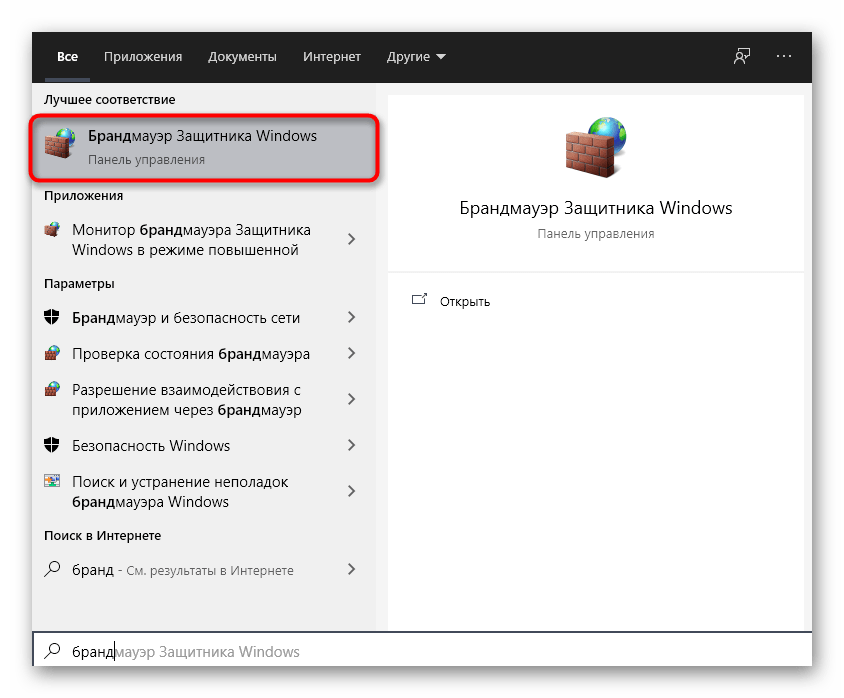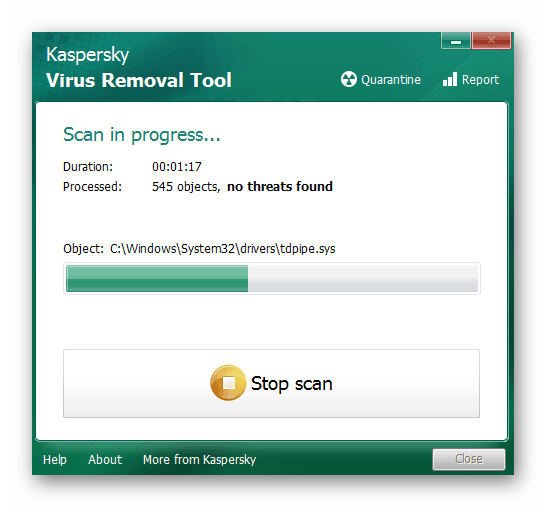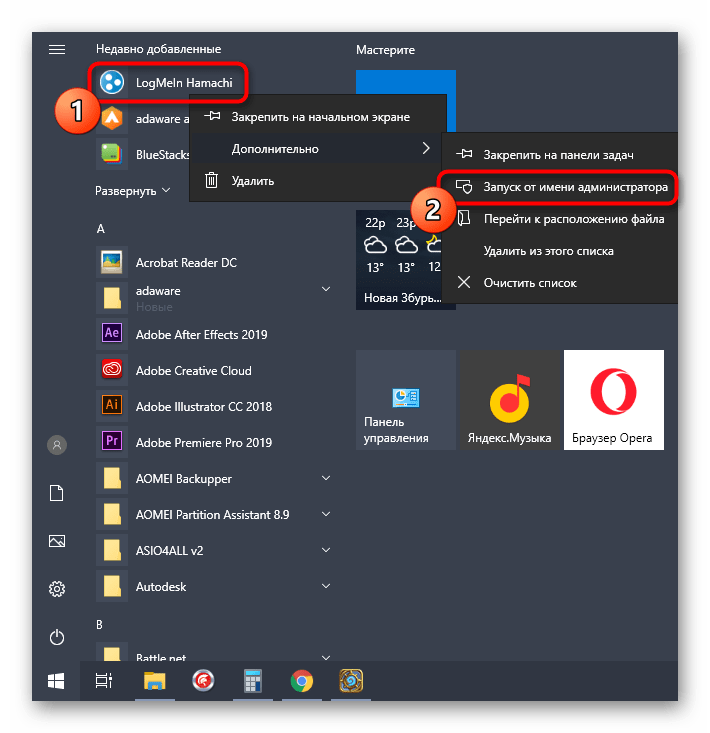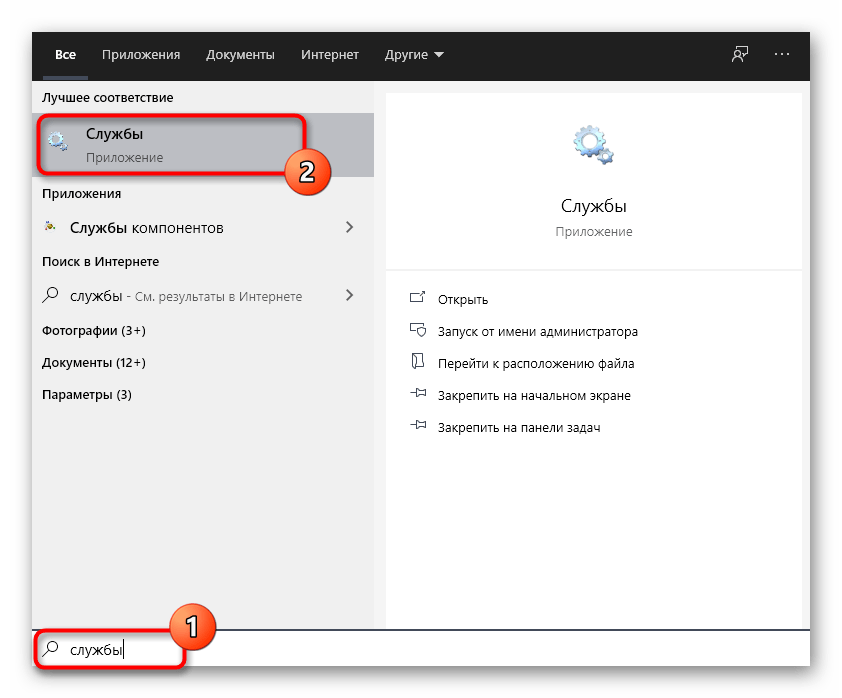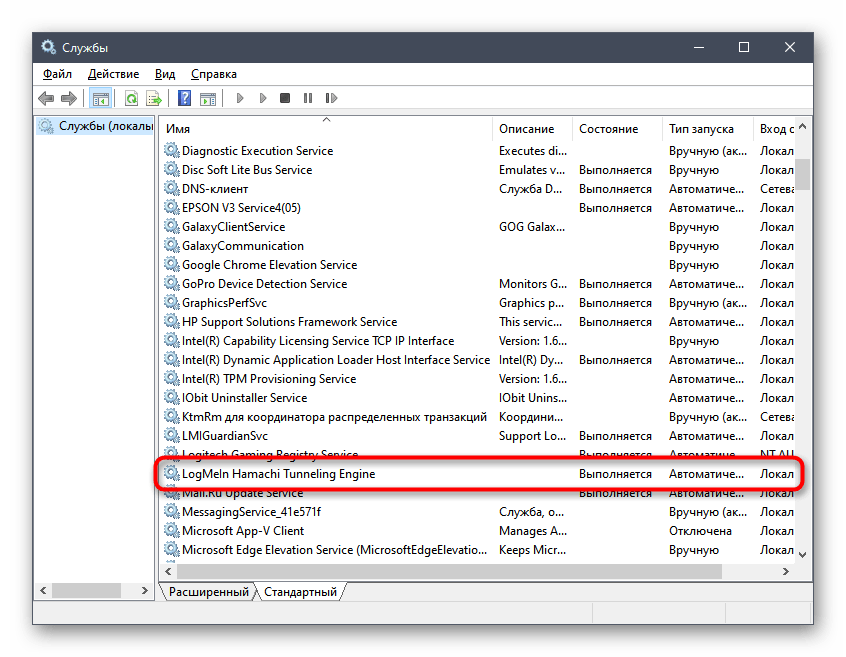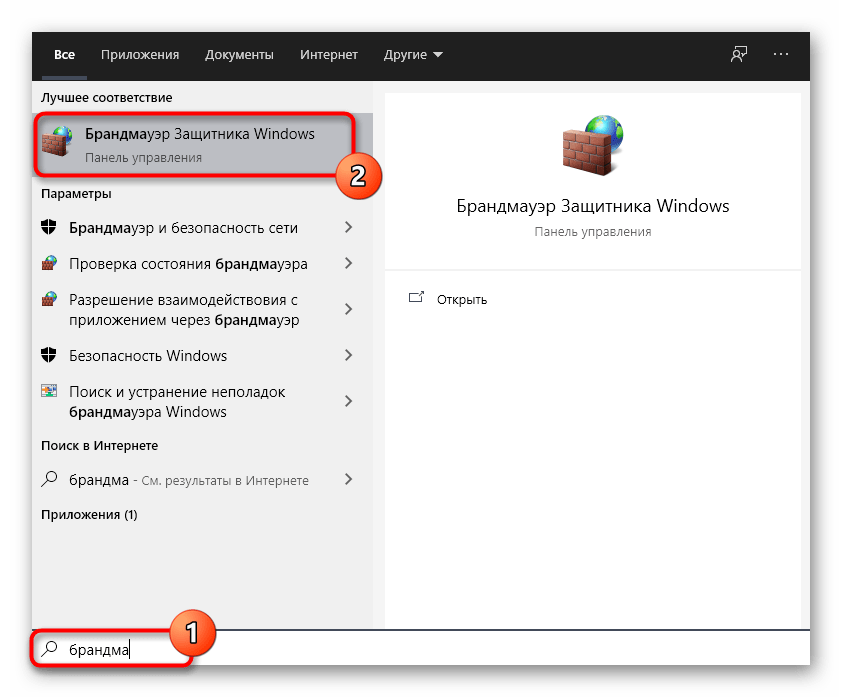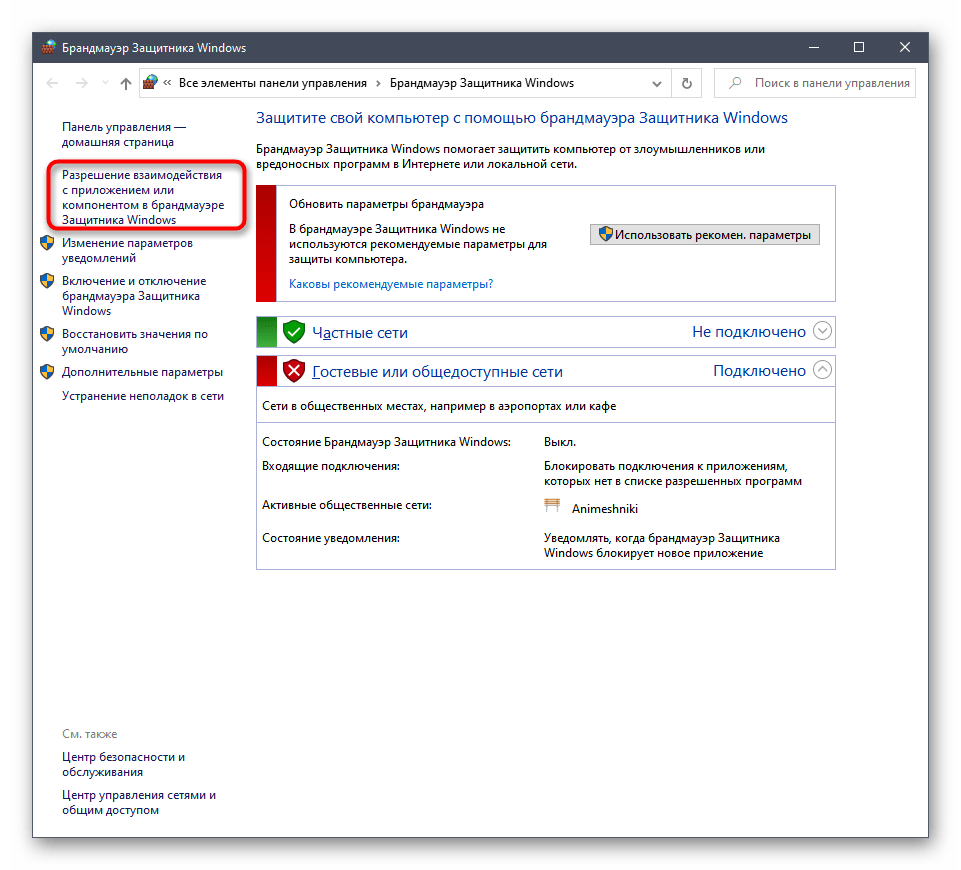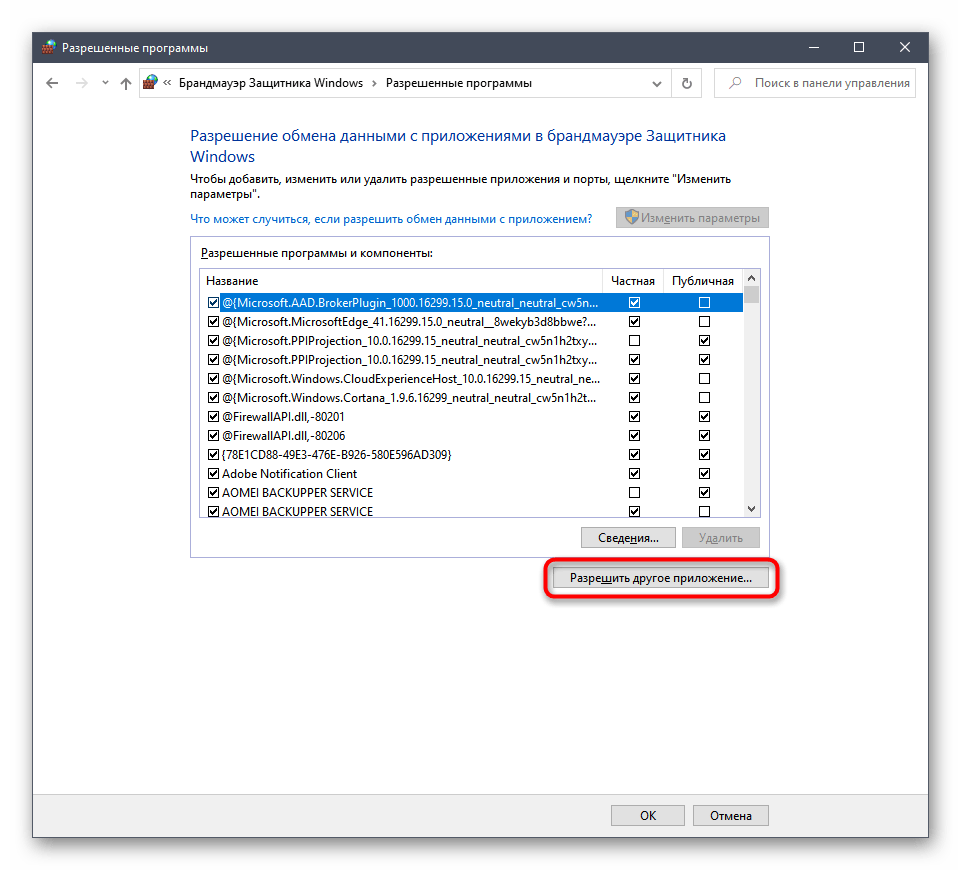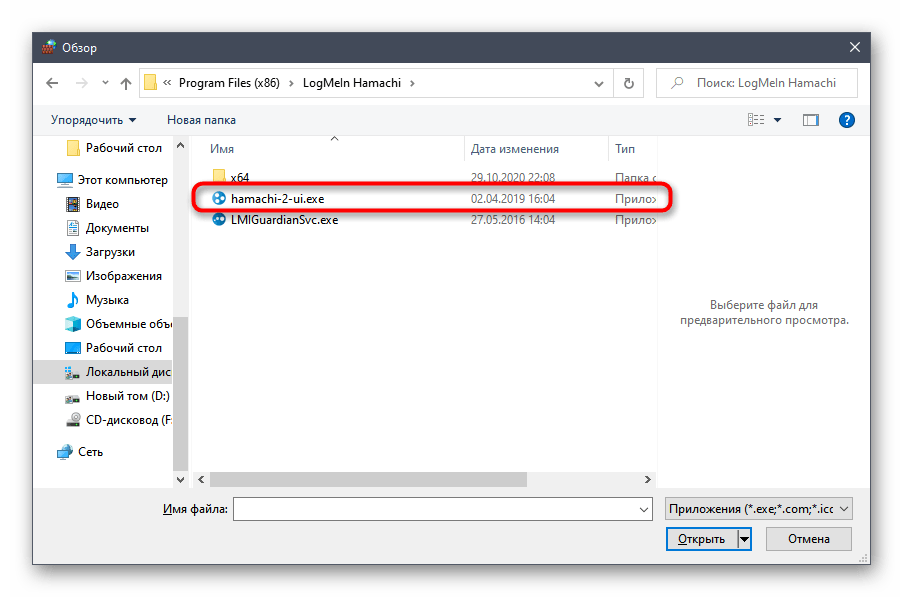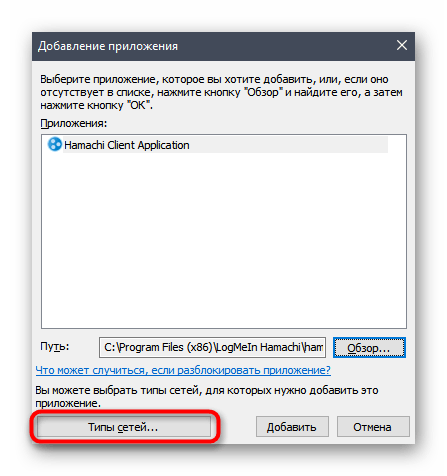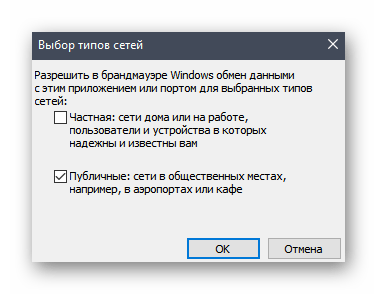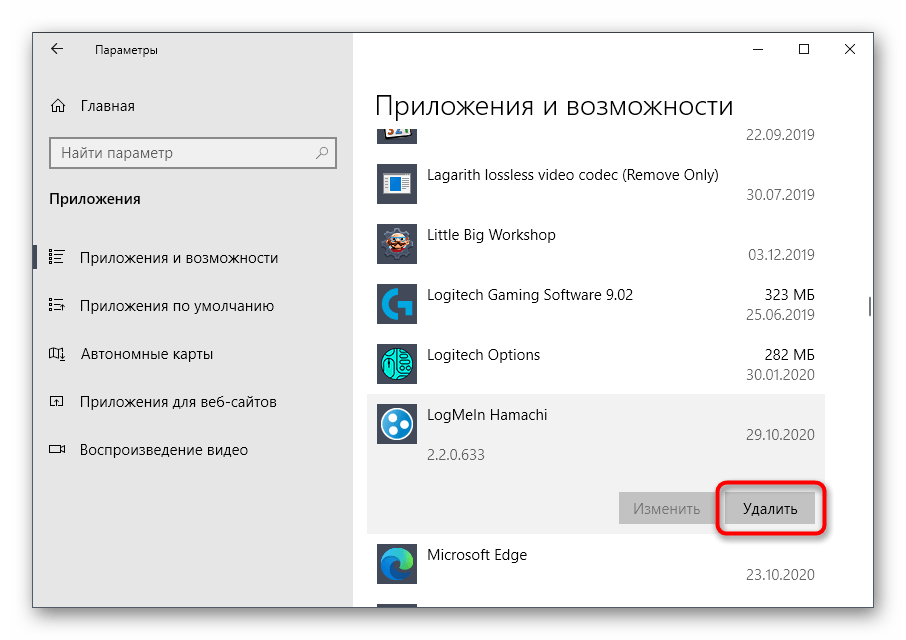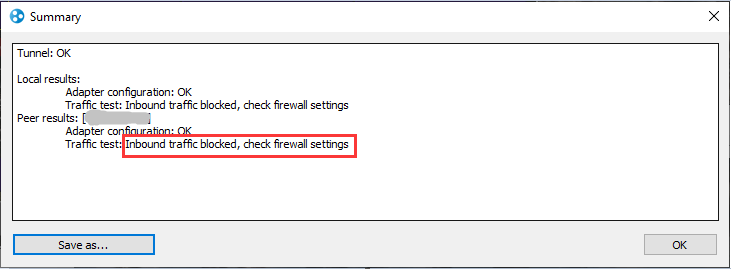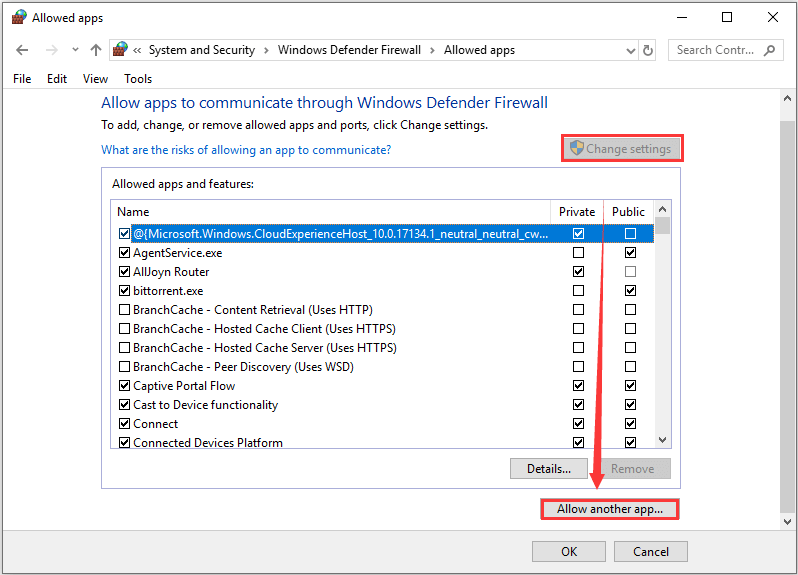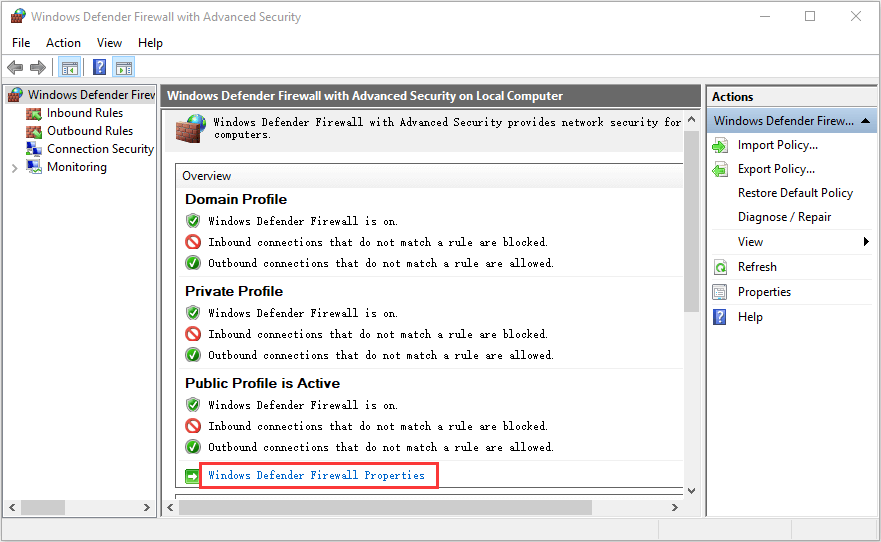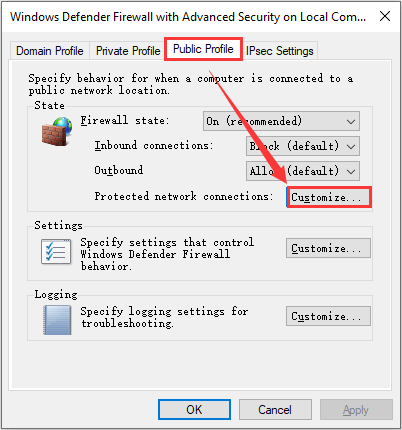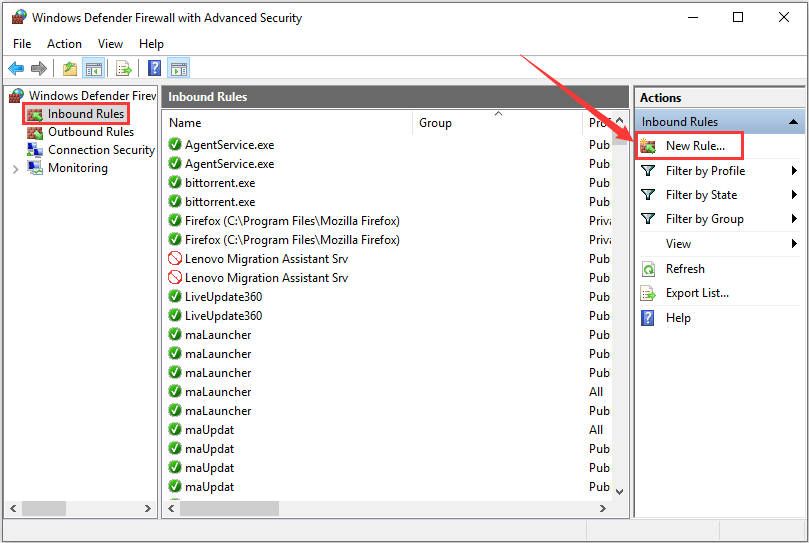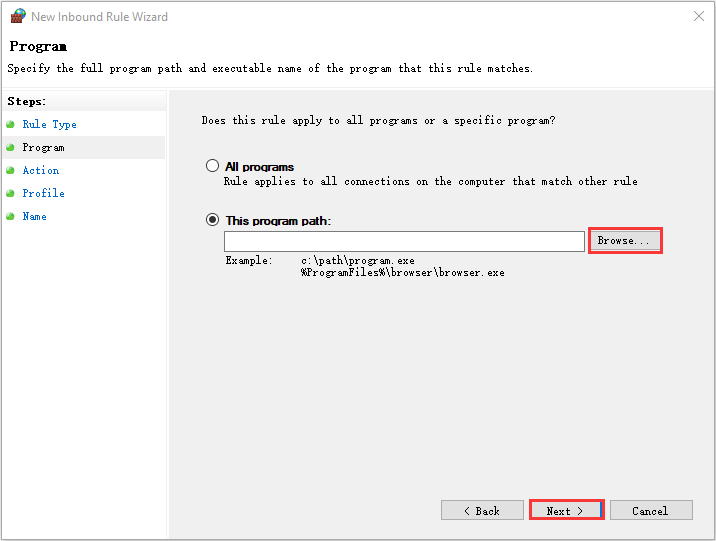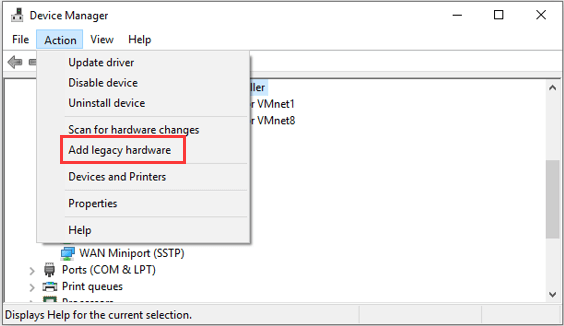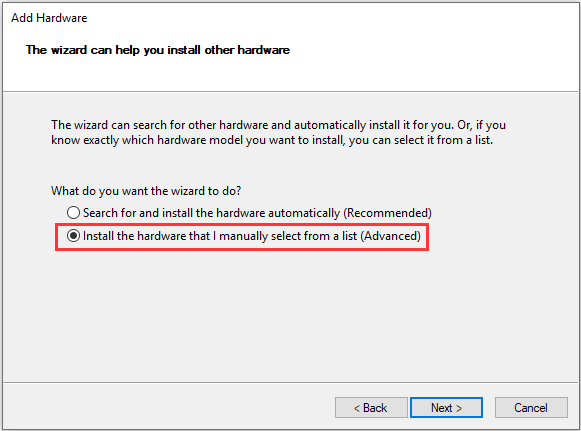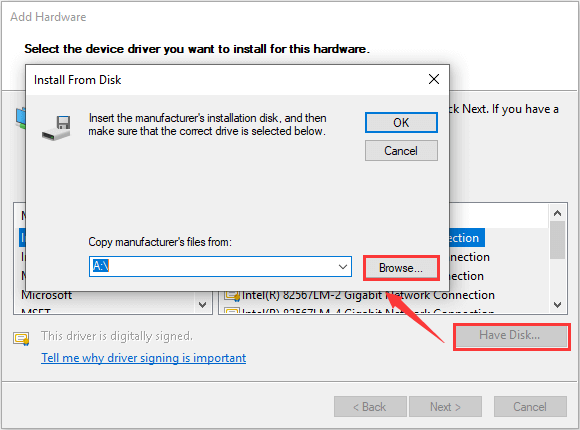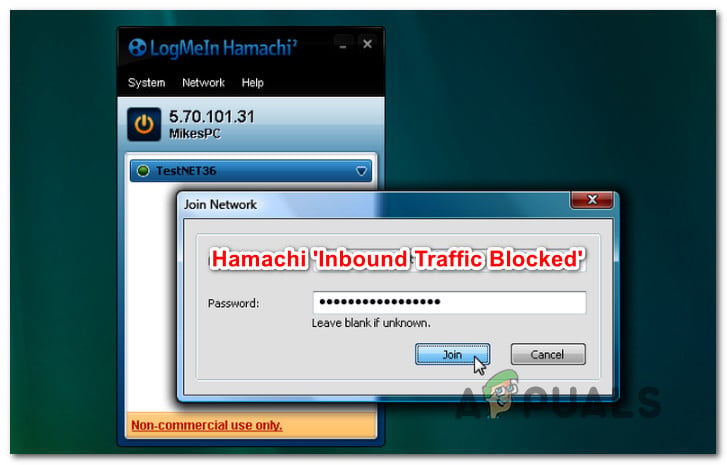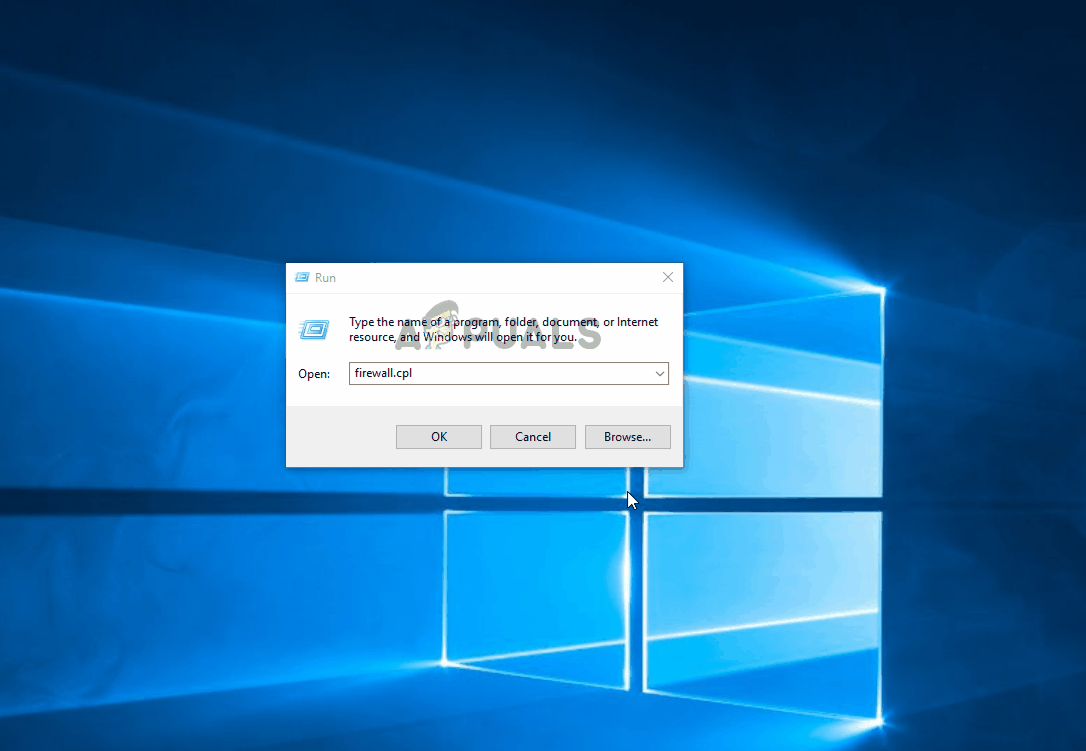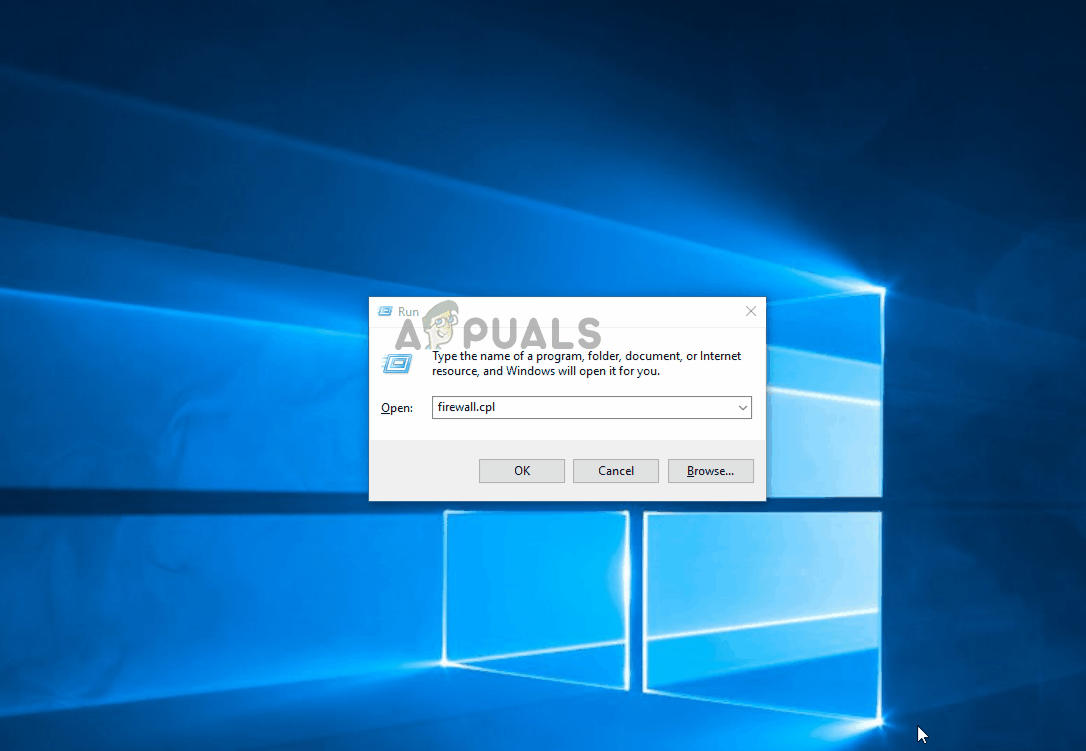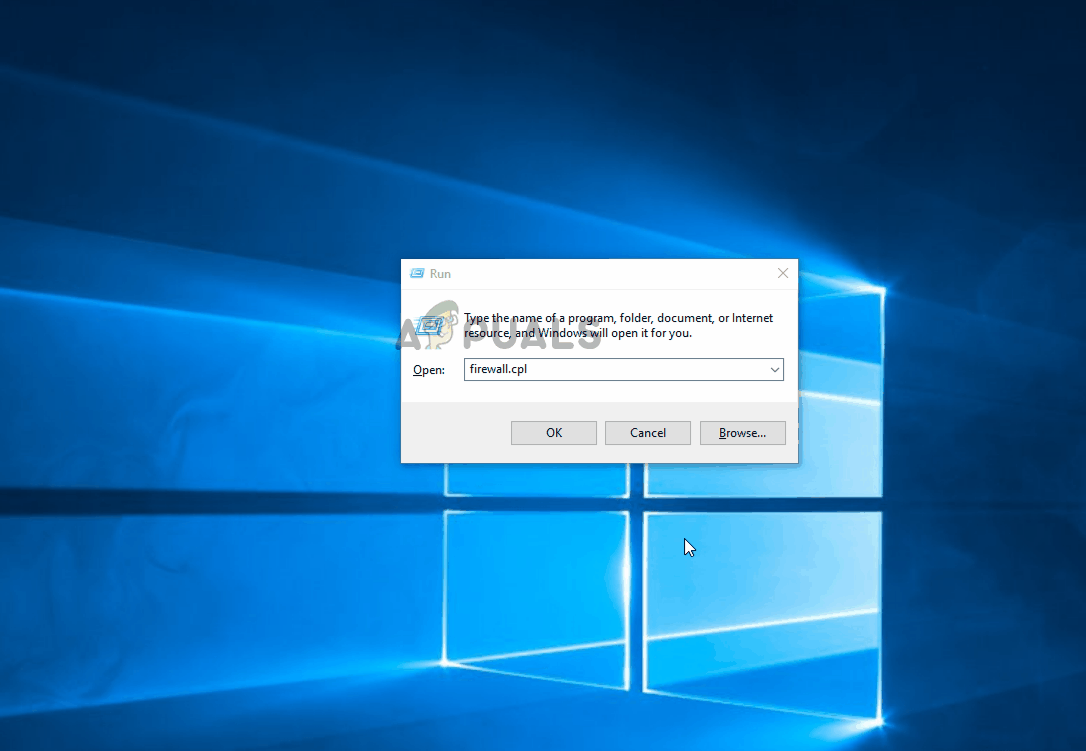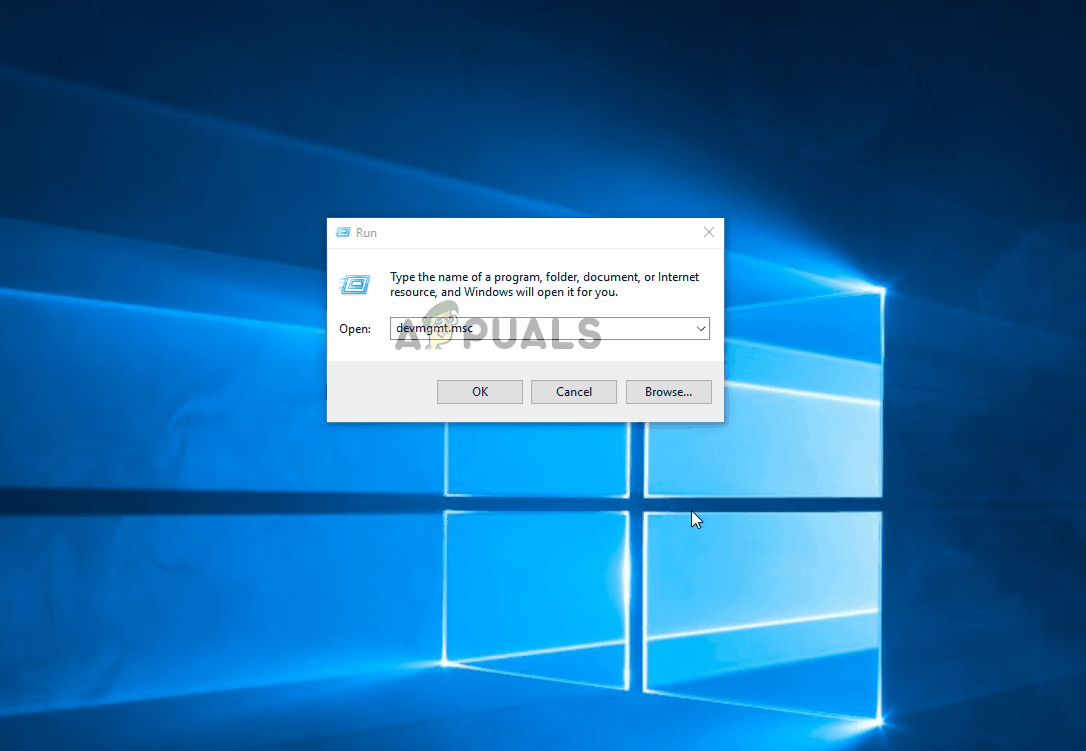Чаще всего работе Hamachi, как и другим сетевым программам, мешает встроенный в Windows firewall (который называется «брандмауэр») и установленный на компьютер антивирус. Поэтому, если во время теста соединения вы видите в Хамачи сообщение «заблокирован входящий трафик, проверьте настройки сетевого экрана», значит нужно отключить и то и другое и попробовать соединиться снова.
Брандмауэр
Брандмауэр по умолчанию очень редко блокирует Hamachi, но лучше убедиться, имеет ли он отношение к этому. Откройте поиск (рассказываю на примере Windows 10) и введите слово «брандмауэр», затем запустите его.
Зайдите во «Включение и отключение брандмауэра Windows» и отключите его для частной и общественной сети.
Проверьте соединение в Hamachi, пропала ли ошибка? Если да, значит дело в брандмауэре, добавьте программу в его исключение либо отключайте его на время ее использования.
Антивирус
Наиболее частой причиной отсутствия выхода в сеть Hamachi является установленный антивирус. Отключите его (и встроенный в него firewall тоже, если он отключается отдельно). Проверьте связь – она должна восстановиться. Если так и произошло, рекомендую не держать антивирус отключенным, а внести Хамачи в его исключения. Обратитесь к производителю своего антивируса за инструкцией, в которой будет описано, как это сделать.
Содержание
- Способ 1: Отключение брандмауэра Windows
- Способ 2: Временное отключение антивируса
- Способ 3: Запуск Hamachi от имени администратора
- Способ 4: Перезапуск службы Hamachi
- Способ 5: Добавление Hamachi в список разрешений для брандмауэра
- Способ 6: Переустановка Hamachi
- Вопросы и ответы
Способ 1: Отключение брандмауэра Windows
Проблема с текстом «Заблокирован входящий трафик, проверьте настройки сетевого экрана» при работе в Hamachi чаще всего связана с действием стандартного межсетевого экрана операционной системы, поэтому первоочередная задача — временно отключить этот компонент. Для этого рекомендуем воспользоваться отдельным руководством на нашем сайте, перейдя по ссылке ниже.
Подробнее: Отключение брандмауэра в Windows 10
Если это не помогло, брандмауэр можно снова включить, выполнив обратные действия. Связано это с тем, что в одном из следующих методов мы еще поговорим о данном компоненте.
Способ 2: Временное отключение антивируса
Во многие антивирусы от сторонних разработчиков тоже встроен межсетевой экран, влияющий на работу определенных приложений. Он может оказаться причиной блокировки входящего трафика, поэтому данному инструменту тоже стоит уделить время. О том, как временно отключить антивирус для проверки его активности, другой наш автор рассказывает в отдельной тематической статье далее.
Подробнее: Как отключить антивирус
Способ 3: Запуск Hamachi от имени администратора
Еще одна причина появления ошибки с текстом «Заблокирован входящий трафик, проверьте настройки сетевого экрана» — ограниченные права пользователя, из-за чего возникает потребность запустить софт от имени администратора. Для этого необходимо найти ярлык или исполняемый файл, щелкнуть по нему правой кнопкой мыши и в появившемся контекстном меню выбрать соответствующий пункт.
Способ 4: Перезапуск службы Hamachi
За нормальное функционирование рассматриваемой программы в операционной системе отвечает одна фирменная служба, от которой все и зависит. Если по каким-то причинам она дала сбой, вполне возможны проблемы с передачей входящего трафика в софте. Для решения этой ситуации потребуется перезапустить службу, что происходит так:
- Откройте меню «Пуск», через поиск отыщите приложение «Службы» и вызовите его.
- В списке вас интересует «LogMein Hamachi Tunneling Engine». Нажмите дважды по этой строке для перехода в окно со свойствами.
- В нем остановите, а затем повторно запустите данную службу.
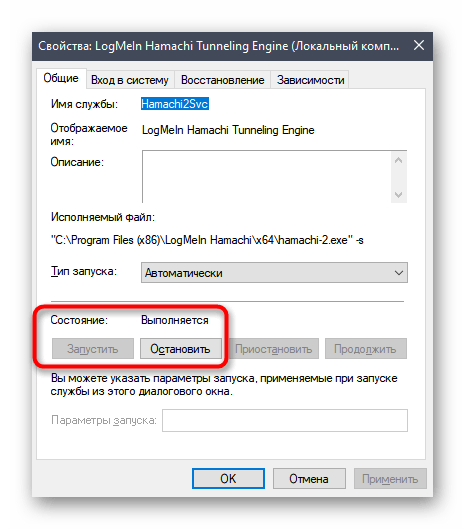
Вернитесь к Hamachi и начните повторную проверку входящего подключения. Если результат до сих пор отрицательный, рассмотрите следующие методы.
Способ 5: Добавление Hamachi в список разрешений для брандмауэра
Ранее мы уже говорили о том, что брандмауэр Windows иногда оказывает негативное влияние на работу сетевых программ, и предлагали его просто отключить. В некоторых случаях это не помогает, поэтому приходится оставлять межсетевой экран включенным, но дополнительно добавить Хамачи в список разрешенного софта, что происходит так:
- Откройте «Пуск» и снова отыщите элемент «Брандмауэр Защитника Windows», воспользовавшись функцией поиска.
- В появившемся окне обратите внимание на панель слева, где необходимо кликнуть по строке «Разрешение взаимодействия с приложением или компонентом в брандмауэре Защитника Windows».
- Сейчас настраивать разрешения нельзя, поэтому предварительно потребуется нажать на «Изменить параметры».
- После этого используйте кнопку «Разрешить другое приложение», поскольку изначально Hamachi отсутствует в основном списке.
- Отобразится новое окно, где перейдите к обзору через «Проводник», чтобы отыскать исполняемый файл софта.
- Найдите EXE-объект, отвечающий за запуск Хамачи, и дважды щелкните по нему ЛКМ для выбора.
- Сразу же переместитесь к меню «Типы сетей».
- Убедитесь, что разрешения установлены для используемого типа сети, а если это не так, самостоятельно добавьте галочку.
- Вернитесь к предыдущему окну и подтвердите добавление программного обеспечения в список разрешенного.

Способ 6: Переустановка Hamachi
Завершает список возможных методов исправления рассматриваемой проблемы переустановка Хамачи. Это самый радикальный вариант, переходить к выполнению которого нужно в том случае, если ничего из вышеперечисленного не помогло. Для начала полностью деинсталлируйте данное приложение, реализовав ряд действий, о которых написано в специализированном руководстве на нашем сайте по ссылке ниже.
Подробнее: Полное удаление программы Hamachi
Как только удаление ПО завершено, загрузите его последнюю версию с официального сайта, установите и произведите полную настройку, чтобы обеспечить нормальное функционирование приложения. Для этого тоже предлагаем воспользоваться нашей инструкцией, кликнув по следующему заголовку.
Подробнее: Настройка Hamachi в Windows
Еще статьи по данной теме:
Помогла ли Вам статья?
Are you bothered by the Hamachi Inbound traffic blocked issue? Don’t panic. In this article from MiniTool Partition Wizard, you will learn about 4 methods that may help you resolve the error effectively.
LogMeln Hamachi is a virtual private network (VPN) application which is commonly used by Windows users. Some problems have been reported with it, and the Inbound Traffic block issue is one of them. Commonly, this error appears with the error message “Inbound traffic blocked, check firewall settings”.
According to the report, you may receive it after you reformat your computer or upgrade to a newer Windows version. And this issue might be caused by the following factors:
- Blocked by Windows Defender Firewall.
- Included in the list of Protected Networks.
- Lack of inbound rule in Firewall.
- Improper Hamachi driver.
Well, here are some workarounds that have helped some users successfully resolve Inbound traffic blocked on Hamachi. If you are struggling with the problem, you can feel free to try them one by one. Without any further ado, let’s see the details.
Fix 1: Allow Hamachi Through Windows Defender Firewall
You are likely to receive the Inbound traffic blocked error message if your Hamachi is blocked by your firewall. If the Hamachi network is trusted, you can go to allow the application through the Windows Defender Firewall in this case. If you don’t know how to do that, just follow the steps below:
Step 1: Press Windows + R to open Run window.
Step 2: Input firewall.cpl in the empty box and click OK to go to Windows Defender Firewall interface in Control Panel.
Step 3: Click Allow an app or feature through Windows Defender Firewall.
Step 4: Click Change settings button to make the settings editable and then click Allow another app.
Step 5: In the pop-up Add an app window, click Browser bottom next to Path. Navigate to the storage directory of your Hamachi to select the executable file, and click Open button.
Step 6: When you see the Hamachi Client Tunneling Engine in the original window, click Add button.
Now, Hamachi has been added to the exception list and you can click OK to save changes. Then, restart your computer and check if Hamachi Inbound traffic blocked issue is fixed.
Fix 2: Exclude Hamachi From Protected Network Connections List
Alternatively, you can also try excluding your Hamachi from the protected network connections list. Here’s a simple guide.
Step 1: Navigate to Windows Defender Firewall interface according to the steps above.
Step 2: Click Advanced settings in the left pane this time, and you will get the windows of Windows Defender Firewall with Advanced Security.
Step 3: In the middle column, click Windows Defender Firewall Properties at the bottom of the Overview section.
Step 4: Switch to the Public Profile tab and click the Customize button next to Protected network connections.
Step 5: All the protected connections will be listed in the new window. If your Hamachi is among the list, uncheck it and click OK. Then, click Apply and OK to save changes.
Once it’s done, reboot your device and check if the error is fixed.
Fix 3: Create A New Inbound Rule for Hamachi
What’s more, you might also resolve Inbound traffic blocked on Hamachi by creating a new inbound rule for your Hamachi. Here’s how to do that:
Step 1: Open Windows Defender Firewall with Advanced Security window.
Step 2: Click Inbound Rules in the left pane, and then click New Rule in the right pane.
Step 3: In the New Inbound Rule Wizard, click Program in the list of Steps. Choose This program path, click Browse button, and locate your Hamachi and select the executable. Click Open to add the path.
Step 4: Keep clicking Next button to use the default settings for the Action and Profile. Then, name the new rule as your preference and click Finish button.
Restart your computer, and Hamachi inbound traffic blocked issue should have been resolved.
Fix 4: Reinstall Hamachi Driver Manually
If the Hamachi driver that is used to handle the inbound connection is not installed improperly, there’s a high possibility of inbound traffic blocked issue on your Hamachi. In this case, you can try reinstall your Hamachi driver manually.
Step 1: Right-click the Start button and choose Device Manager.
Step 2: Expand the Network adapters category, right-click your Hamachi driver, choose Uninstall device, and confirm the operation.
Step 3: Now, click Action button in the ribbon bar and choose Add legacy hardware from the drop-down menu.
Step 4: Click Next button in the welcoming pane. Then, choose Install the hardware that I manually select from a list option and click Next.
Step 5: In the list of Common hardware types, choose Network adapters and click Next button. Click Have Disk button.
Step 6: In the pop-up window, click Browse button to go to the location of your Hamachi, choose the Hamachi.inf file, and click Open.
Step 7: Click OK and then Next button. You just need to follow the on-screen instructions to complete the installation of the driver.
Finally, restart your computer to check if your Hamachi is free from the inbound traffic blocked issue.
Several Windows users have been struggling to set up and use Hamachi after encountering the “Inbound Traffic blocked, check firewall settings” error. Typically, this error is reported to occur when users try to configure it in order to play a game or after the computer has been reformated or upgraded to a newer Windows build. As it turns out, the issue is not exclusive to a certain Windows version since it’s also reported to occur on Windows 10, Windows 8.1 and Windows 7.
What is causing the “Inbound Traffic blocked, check firewall settings” error?
We investigated this particular issue by looking at various user reports and the repair strategies that are commonly being used to resolve this particular issue. As it turns out, there are several different potential culprits that might be responsible for this particular issue:
- Hamachi is among the list of Protected Networks – One of the most common culprits that produce this error is when Hamachi is among the list of Protected Network Connection. Several users that have encountered this exact problem have reported that they managed to resolve the issue by customizing the default Protection network connection.
- Hamachi is being blocked by Windows Firewall – Another common scenario in which this error occurs is when LogMeIn Hamachi is ending up being blocked by your Windows Firewall. If this scenario is applicable, one quick fix around this issue is to add Hamachi to the list of excluded Firewall items.
- Windows Firewall doesn’t have an inbound rule for Hamachi – If your firewall security settings are strict, I can guarantee that Hamachi will not be able to maintain inbound connections. An elegant way that will allow you to keep your current firewall security level and use Hamachi is to establish an inbound rule for the VPN network.
- Hamachi driver is missing or incomplete – As it turns out, this particular error can also occur if Hamachi is missing the tunneling driver or the driver was not installed correctly. In this case, you will be able to resolve the issue by installing the missing Hamachi driver manually by using Device Manager.
If you’re currently struggling to resolve the very same error message, this article will provide you with some troubleshooting guides. Down below, you’ll find a collection of methods that other users in a similar situation have successfully used to fix the “Inbound Traffic blocked, check firewall settings” error.
Each of the potential fixes presented below is confirmed to work by at least one affected users. Since the methods are ordered by efficiency and difficulty, we advise you to follow them in the order that they are presented. One of them is bound to resolve the issue regardless of the culprit that is actually causing it.
Method 1: Removing Hamachi from the list of Protected Network Connections (if applicable)
If you’re encountering this issue with Hamachi and you’re using the default Windows security protection (Windows Defender + Windows Firewall), chances are the issue is occurring because your firewall is blocking inbound connections in an attempt to protect the virtual network.
Note: If you’re not using Windows Firewall as the default network protection software, move down directly to Method 4 as this one will not make a difference.
Several affected users have reported that they managed to resolve the issue by accessing the Windows Defender Firewall settings and customizing the default Protection network connection behavior so that Hamachi is excluded from the list of protected items.
Here’s a quick guide on removing Hamachi from the list of Protected Network Connections:
- Press Windows key + R to open up a Run dialog box. Then, type “firewall.cpl” and press Enter to open up the Windows Defender Firewall menu.
- Once you get to the Windows Defender Firewall menu, click on Advanced settings from the vertical menu on the left section of the screen.
- When you get to the Windows Defender Firewall with Advanced Security window, move over to the right pane. Once you’re there, scroll down to the bottom of the Overview section and click on Windows Defender Firewall Properties.
- Inside the Windows Defender Firewall with Advanced Security window, select the Public Profile tab, then click on the Customize button associated with Protected network connections.
- Next, inside the Protected Network Connections for the Public Profile window, you should see a list of Network connection. If Hamachi is present there, uncheck the box associated with it and click Ok.
- Click Apply to save the new configuration.
- Restart your computer and see if the “Inbound Traffic blocked, check firewall settings” error is resolved once the next startup sequence is complete.
Note: Keep in mind that if you have multiple computers connected to the same Hamachi network, you need to repeat this step with every connected machine.
If you’re still encountering the same error message while trying to use Hamachi or this method wasn’t applicable, move down to the next method below.
Method 2: Adding Hamachi to the list of excluded Firewall items
Some affected users have been able to resolve the issue entirely by adding the main Hamachi executable to the list of excluded Firewall items. This might seem like a risky procedure, but it isn’t as long as you trust the Hamachi network that you’re using. We’ve seen this fixed being confirmed a couple of times and it seems to that the likelihood of success is higher on Windows 10.
Note: If you’re using a 3rd party firewall, move directly to Method 4.
Here’s a quick guide on adding Hamachi to the list of excluded Firewall items:
- Press Windows key + R to open up a Run dialog box. Then, type “firewall.cpl” and press Enter to open up the Windows Defender Firewall menu.
- Once you’re inside the Windows Defender Firewall window, click on Allow an app or feature through Windows Defender Firewall from the vertical menu on the left section of the screen.
- Inside the Allowed apps menu, click on Allow another app (under the list of Allowed apps and features).
Note: If the Allow another app button is greyed out, click on the Change settings button at the top and accept the UAC (User Account Prompt). After you do this, the button will become available. - From the Add an app menu, click on Browse and navigate to the following location, select hamachi-2.exe and click Open:
C:\Program Files (x86)\LogMeIn Hamachi\x64
Note: If you’re using a 32-bit Windows version, navigate here instead, select hamachi-2-ui.exe and click Open:
C:\Program Files (x86)\LogMeIn Hamachi
- If the selected app shows Hamachi Client Tunneling Engine, click on Add to add the main Hamachi executable to the exception list.
- Make sure that the changes are saved, then restart your computer and see if the issue has been resolved once the next startup sequence is complete.
If you’re still encountering the “Inbound Traffic blocked, check firewall settings” error when trying to use Hamachi (or this method wasn’t applicable), move down to the next method below.
Method 3: Creating a new inbound rule for Hamachi
If the first two methods above didn’t resolve the “Inbound Traffic blocked, check firewall settings” error and you are using Windows Firewall, then you should be able to resolve the issue by establishing a new inbound rule for Hamachi. This procedure is a little more advanced than the first two, but you should be able to get the job done if you follow the instructions carefully.
Several affected users that have also been encountering this issue have reported that they managed to resolve the issue by creating a new inbound rule that excluded Hamachi from the list of managed items.
Here’s a quick guide on how to create a new inbound rule for Hamachi:
- Press Windows key + R to open up a Run dialog box. Then, type “firewall.cpl” and press Enter to open up the Windows Defender Firewall window.
- Once you’re inside the Windows Defender Firewall menu, click on Advanced settings from the vertical menu on the left section of the screen to access the Advanced Security options of Windows Firewall.
- When you’re inside the Windows Defender Firewall with Advanced Security window, click on Inbound Rules from the vertical menu on the left.
- Next, move over to the right section of the screen and click on New Rule (under Actions).
- Inside the New Inbound Rule Wizard, make sure that the Rule Type is set to Program and click Next to advance to the next menu.
- Once you get to the Program step, select the toggle associated with This program path and click Browse.
- Then, use the Open window to navigate to the following location, select hamachi-2.exe and click Open:
C:\Program Files (x86)\LogMeIn Hamachi\x64
Note: If you’re using a 32-bit Windows version, navigate here instead, select hamachi-2-ui.exe and click Open:
C:\Program Files (x86)\LogMeIn Hamachi
- Once the correct executable is selected, return to the New Inbound Rule Wizard once again and click Next.
- On the Action step, ensure that the toggle associated with Allow the connection is checked and click Next once again.
- Ensure that the rule applies to Domain, Private and Public by checking the boxes associated with each one and click Next.
- Name your new rule something suggestive like “Hamachi Tunneling” and click Finish to enforce the rule.
- Restart your computer and see if the issue is resolved once the next startup sequence is complete.
If you’re still seeing the “Inbound Traffic blocked, check firewall settings” error or this fix wasn’t applicable, move down to the next method below.
Method 4: Installing the LogMeIn Hamachi driver manually
It’s also possible that you’re encountering the issue because the main LogMeIn Hamachi driver that is supposed to handle the inbound connection was not installed correctly. Several affected users have reported that the issue was resolved after they used Device Manager to manually install the required driver via the .ini file.
Although this sounds like a technical procedure, it’s quite simple if you follow the instructions to the letter. Here’s what you need to do:
- Press Windows key + R to open up a Run dialog box. Then, type “devmgmt.msc” and press Enter to open up Device Manager. If you’re prompted by the UAC (User Account Control), click Yes to grant administrative privileges.
- Inside Device Manager, click on Actions from the ribbon bar at the top, then click on Add legacy hardware from the context menu.
- Inside the Add Hardware wizard, click Next at the first prompt, then select the toggle associated with Install the hardware that I manually select from a list (Advanced) and click Next once again.
- From the list of Common hardware types window, scroll down to Network adapters and double click on it.
- Once you get to the next screen, click the Have Disk button on the left section of the screen.
- Inside the Install from Disk window, click the Browse button, navigate to the following location, select hamachi.inf and click Open. Then, click OK to load the .ini driver inside Device Manager.
- When you return to the Add Hardware window, click Next once again.
- Click Next to kickstart the Hamachi driver installation and follow the on-screen instructions to complete the installation.
- Once the installation is complete, restart your computer and see if the issue is resolved once the next startup sequence is complete.
Kevin Arrows
Kevin Arrows is a highly experienced and knowledgeable technology specialist with over a decade of industry experience. He holds a Microsoft Certified Technology Specialist (MCTS) certification and has a deep passion for staying up-to-date on the latest tech developments. Kevin has written extensively on a wide range of tech-related topics, showcasing his expertise and knowledge in areas such as software development, cybersecurity, and cloud computing. His contributions to the tech field have been widely recognized and respected by his peers, and he is highly regarded for his ability to explain complex technical concepts in a clear and concise manner.
Заблокирован входящий трафик, проверьте настройки сетевого экрана
Работа Hamachi, подобно другим программам на основе сети, зачастую отличается помехами. В качестве причин можно выделить Firewall, то есть, брандмауэр, встроенный в Windows, а также антивирус, который установлен на вашем компьютере. Если в процессе тестирования соединения в Hamachi возникает сообщение потом, что входящий трафик заблокирован и нужно проверить настройки сетевого экрана, отключите то и другое, а затем попробуйте установить новое соединение.
Особенности брандмауэра
Блокировка Hamachi с помощью брандмауэра по умолчанию — это чрезвычайно редко. Однако на всякий случай лучше перестраховаться и убедиться в том, что именно он причастен к блокировке. Для начала откройте поиск, например, в System BIOS Windows 10, наберите слово «брандмауэр» и сделайте запуск.
Далее потребуется зайти в раздел «Включение и отключение брандмауэра Windows» и полностью отключить его для всех сетей, как частных, так и общественных.
После проверки соединения в системе Hamachi, установите, пропала ли данная ошибка. Если она пропала, то повинен брандмауэр. Программу Hamachi следует добавить в исключения или отключать антивирус в процессе запуска и работы в программе.
Особенности антивируса
Самой частой причиной, почему Hamachi не выходит в сеть, является блокировка антивируса. Для того чтобы это не происходило, антивирус и встроенный в него Firewall, если он отдельно отключается, следует отключить. После этого произведите проверку связи. В результате восстановление должно произойти. Если это произошло, рекомендуется держать антивирус всё время в отключенном состоянии или просто внести Hamachi в исключения. Для получения более подробных настроек по антивирусу следует обратиться к производителю или ознакомиться с инструкцией.





